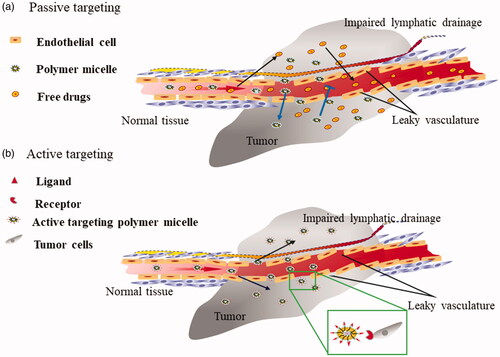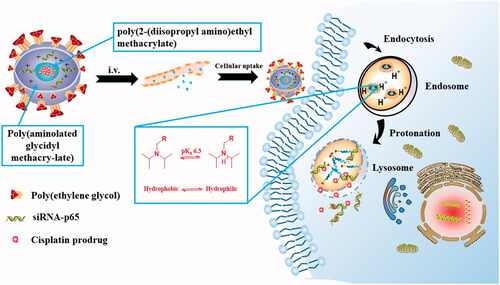Figures & data
Table 1. Examples of intelligent polymeric micelles for multidrug co-delivery and cancer therapy.


